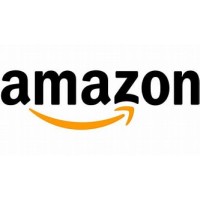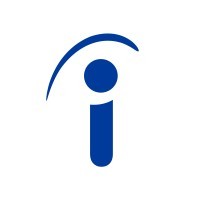
LangChain Company Cyber Security Posture
langchain.comLangChain is the platform for building reliable agents. Our products power top engineering teams — from fast-growing startups like Lovable, Mercor, and Clay to global brands including AT&T, Home Depot, and Klarna. LangGraph is a low-level orchestration framework for building controllable agents and long-running workflows. It’s used in production by teams at Replit, Uber, LinkedIn, GitLab, and more. LangSmith offers unified evaluation and monitoring to help developers debug, evaluate, and improve their agents at scale. LangChain provides hundreds of integrations and composable components, making it easy to connect with the latest models, tools, and databases — with minimal engineering overhead. Together, these tools help teams build, deploy, and manage enterprise-grade agents, faster.
LangChain Company Details
langchain
101 employees
431643.0
none
Technology, Information and Internet
langchain.com
Scan still pending
LAN_6814675
In-progress
Between 200 and 800
This score is AI-generated and less favored by cyber insurers, who prefer the TPRM score.
 LangChain Global Score
LangChain Global Score.png)

LangChain Company Scoring based on AI Models
| Model Name | Date | Description | Current Score Difference | Score |
|---|---|---|---|---|
| AVERAGE-Industry | 03-12-2025 | This score represents the average cybersecurity rating of companies already scanned within the same industry. It provides a benchmark to compare an individual company's security posture against its industry peers. | N/A | Between 200 and 800 |
LangChain Company Cyber Security News & History
| Entity | Type | Severity | Impact | Seen | Url ID | Details | View |
|---|---|---|---|---|---|---|---|
| LangChain | Vulnerability | 100 | 5 | 6/2025 | LAN901061825 | Link | |
Rankiteo Explanation : Attack threatening the organization's existenceDescription: Cybersecurity researchers at Noma Security disclosed a critical vulnerability dubbed AgentSmith in LangChain‘s LangSmith platform, specifically affecting its public Prompt Hub. This flaw, with a CVSS score of 8.8, could allow malicious AI agents to steal sensitive user data, including OpenAI API keys, and manipulate responses from large language models (LLMs). The vulnerability exploited harmful proxy configurations, enabling attackers to gain unauthorized access to victims' OpenAI accounts, potentially downloading sensitive datasets, inferring confidential information, or causing financial losses by exhausting API usage quotas. In advanced attacks, the malicious proxy could alter LLM responses, leading to fraud or incorrect automated decisions. LangChain confirmed the issue and deployed a fix, introducing new safety measures to prevent future exploitation. | |||||||
LangChain Company Subsidiaries

LangChain is the platform for building reliable agents. Our products power top engineering teams — from fast-growing startups like Lovable, Mercor, and Clay to global brands including AT&T, Home Depot, and Klarna. LangGraph is a low-level orchestration framework for building controllable agents and long-running workflows. It’s used in production by teams at Replit, Uber, LinkedIn, GitLab, and more. LangSmith offers unified evaluation and monitoring to help developers debug, evaluate, and improve their agents at scale. LangChain provides hundreds of integrations and composable components, making it easy to connect with the latest models, tools, and databases — with minimal engineering overhead. Together, these tools help teams build, deploy, and manage enterprise-grade agents, faster.
Access Data Using Our API

Get company history
.png)
LangChain Cyber Security News
AgentSmith Flaw in LangSmith’s Prompt Hub Exposed User API Keys, Data
The AgentSmith vulnerability exploited how these public agents could be set up with harmful proxy configurations. A proxy server acts as an ...
LangSmith Bug Could Expose OpenAI Keys and User Data via Malicious Agents
LangSmith flaw let hackers steal OpenAI API keys and data via LangChain agents. Enterprises risked IP leaks.
Wazuh introduces AI-powered threat hunting using local LLM integration
Wazuh's new integration enables security teams to query recent logs using natural language and receive detailed, context-rich responses.
LangChain Partners with Microsoft to Enhance AI Security on Azure
LangChain teams up with Microsoft to improve AI security, enabling safer LLM workflows directly integrated with Azure's trusted cloud ...
Avoiding Dirty RAGs: Retrieval-Augmented Generation with Ollama and LangChain
Ollama (Omni-Layer Learning Language Acquisition Model) is a fantastic tool for installing and running LLMs. It means you can run a model ...
What is AI Security Posture Management (AI-SPM)?
AI-SPM (AI security posture management) is a new and critical component of enterprise cybersecurity that secures AI models, pipelines, data, ...
Vulnerabilities in LangChain Gen AI
Researchers from Palo Alto Networks have identified two vulnerabilities in LangChain, a popular open source generative AI framework with ...
From LLM Scanner to AI Security: Qualys TotalAI’s Journey
Qualys TotalAI evolves from an LLM scanner to a comprehensive AI security solution, providing robust vulnerability detection and protection ...
Cisco SVP talks agentic AI, quantum security and sustainable infrastructure
Cisco is building AI capabilities across its portfolio, including collaboration, observability, security, and network software, ...

LangChain Similar Companies

eBay
At eBay, we create pathways to connect millions of sellers and buyers in more than 190 markets around the world. Our technology empowers our customers, providing everyone the opportunity to grow and thrive — no matter who they are or where they are in the world. And the ripple effect of our work cre

Amazon
Amazon.com is an ecommerce platform that sells many product lines, including media (books, movies, music, and software), apparel, baby products, consumer electronics, beauty products, gourmet food, groceries, health and personal care products, industrial & scientific supplies, kitchen items, jewelry

e&
We're a global technology group focused on innovation and collaboration to create a better future for all. Since 1976, we've been pioneering new technologies and expanding our reach to more people and places. Today, we provide services to over 163 million customers across 16 countries in the Middle

IndiaMART InterMESH Limited
IndiaMART is India's largest online B2B marketplace, connecting buyers with suppliers across a wide array of industries. IndiaMART provides a platform for Small & Medium Enterprises (SMEs), large enterprises, and individual buyers, helping them access diverse portfolios of quality products. Since

Open Connectivity Foundation – OCF
The Open Connectivity Foundation (OCF) is a global, member-driven technical standards development organization. Its 500+ members are working to enable trust, interoperability, and secure communication between IP-connected IoT devices and services. It does this by fostering collaboration between stak

Indeed
More people find jobs on Indeed than anywhere else. Indeed is the #1 job site in the world (Comscore, Total Visits, March 2024) and allows job seekers to search millions of jobs in more than 60 countries and 28 languages. Indeed has more than 580 million Job Seeker Profiles. Every day, job seekers u

Frequently Asked Questions (FAQ) on Cybersecurity Incidents
LangChain CyberSecurity History Information
Total Incidents: According to Rankiteo, LangChain has faced 1 incidents in the past.
Incident Types: The types of cybersecurity incidents that have occurred include ['Vulnerability'].
Total Financial Loss: The total financial loss from these incidents is estimated to be {total_financial_loss}.
Cybersecurity Posture: The company's overall cybersecurity posture is described as LangChain is the platform for building reliable agents. Our products power top engineering teams — from fast-growing startups like Lovable, Mercor, and Clay to global brands including AT&T, Home Depot, and Klarna. LangGraph is a low-level orchestration framework for building controllable agents and long-running workflows. It’s used in production by teams at Replit, Uber, LinkedIn, GitLab, and more. LangSmith offers unified evaluation and monitoring to help developers debug, evaluate, and improve their agents at scale. LangChain provides hundreds of integrations and composable components, making it easy to connect with the latest models, tools, and databases — with minimal engineering overhead. Together, these tools help teams build, deploy, and manage enterprise-grade agents, faster..
Detection and Response: The company detects and responds to cybersecurity incidents through {description_of_detection_and_response_process}.
Incident Details
Incident 1: Ransomware Attack
Title: {Incident_Title}
Description: {Brief_description_of_the_incident}
Date Detected: {Detection_Date}
Date Publicly Disclosed: {Disclosure_Date}
Date Resolved: {Resolution_Date}
Type: {Type_of_Attack}
Attack Vector: {Attack_Vector}
Vulnerability Exploited: {Vulnerability}
Threat Actor: {Threat_Actor}
Motivation: {Motivation}
Incident 2: Data Breach
Title: {Incident_Title}
Description: {Brief_description_of_the_incident}
Date Detected: {Detection_Date}
Date Publicly Disclosed: {Disclosure_Date}
Date Resolved: {Resolution_Date}
Type: {Type_of_Attack}
Attack Vector: {Attack_Vector}
Vulnerability Exploited: {Vulnerability}
Threat Actor: {Threat_Actor}
Motivation: {Motivation}
Common Attack Types: As of now, the company has not encountered any reported incidents involving common cyberattacks.
Identification of Attack Vectors: The company identifies the attack vectors used in incidents through {description_of_identification_process}.
Impact of the Incidents
Incident 1: Ransomware Attack
Financial Loss: {Financial_Loss}
Data Compromised: {Data_Compromised}
Systems Affected: {Systems_Affected}
Downtime: {Downtime}
Operational Impact: {Operational_Impact}
Conversion Rate Impact: {Conversion_Rate_Impact}
Revenue Loss: {Revenue_Loss}
Customer Complaints: {Customer_Complaints}
Brand Reputation Impact: {Brand_Reputation_Impact}
Legal Liabilities: {Legal_Liabilities}
Identity Theft Risk: {Identity_Theft_Risk}
Payment Information Risk: {Payment_Information_Risk}
Incident 2: Data Breach
Financial Loss: {Financial_Loss}
Data Compromised: {Data_Compromised}
Systems Affected: {Systems_Affected}
Downtime: {Downtime}
Operational Impact: {Operational_Impact}
Conversion Rate Impact: {Conversion_Rate_Impact}
Revenue Loss: {Revenue_Loss}
Customer Complaints: {Customer_Complaints}
Brand Reputation Impact: {Brand_Reputation_Impact}
Legal Liabilities: {Legal_Liabilities}
Identity Theft Risk: {Identity_Theft_Risk}
Payment Information Risk: {Payment_Information_Risk}
Average Financial Loss: The average financial loss per incident is {average_financial_loss}.
Commonly Compromised Data Types: The types of data most commonly compromised in incidents are {list_of_commonly_compromised_data_types}.
Incident 1: Ransomware Attack
Entity Name: {Entity_Name}
Entity Type: {Entity_Type}
Industry: {Industry}
Location: {Location}
Size: {Size}
Customers Affected: {Customers_Affected}
Incident 2: Data Breach
Entity Name: {Entity_Name}
Entity Type: {Entity_Type}
Industry: {Industry}
Location: {Location}
Size: {Size}
Customers Affected: {Customers_Affected}
Response to the Incidents
Incident 1: Ransomware Attack
Incident Response Plan Activated: {Yes/No}
Third Party Assistance: {Yes/No}
Law Enforcement Notified: {Yes/No}
Containment Measures: {Containment_Measures}
Remediation Measures: {Remediation_Measures}
Recovery Measures: {Recovery_Measures}
Communication Strategy: {Communication_Strategy}
Adaptive Behavioral WAF: {Adaptive_Behavioral_WAF}
On-Demand Scrubbing Services: {On_Demand_Scrubbing_Services}
Network Segmentation: {Network_Segmentation}
Enhanced Monitoring: {Enhanced_Monitoring}
Incident 2: Data Breach
Incident Response Plan Activated: {Yes/No}
Third Party Assistance: {Yes/No}
Law Enforcement Notified: {Yes/No}
Containment Measures: {Containment_Measures}
Remediation Measures: {Remediation_Measures}
Recovery Measures: {Recovery_Measures}
Communication Strategy: {Communication_Strategy}
Adaptive Behavioral WAF: {Adaptive_Behavioral_WAF}
On-Demand Scrubbing Services: {On_Demand_Scrubbing_Services}
Network Segmentation: {Network_Segmentation}
Enhanced Monitoring: {Enhanced_Monitoring}
Incident Response Plan: The company's incident response plan is described as {description_of_incident_response_plan}.
Third-Party Assistance: The company involves third-party assistance in incident response through {description_of_third_party_involvement}.
Data Breach Information
Incident 2: Data Breach
Type of Data Compromised: {Type_of_Data}
Number of Records Exposed: {Number_of_Records}
Sensitivity of Data: {Sensitivity_of_Data}
Data Exfiltration: {Yes/No}
Data Encryption: {Yes/No}
File Types Exposed: {File_Types}
Personally Identifiable Information: {Yes/No}
Prevention of Data Exfiltration: The company takes the following measures to prevent data exfiltration: {description_of_prevention_measures}.
Handling of PII Incidents: The company handles incidents involving personally identifiable information (PII) through {description_of_handling_process}.
Ransomware Information
Incident 1: Ransomware Attack
Ransom Demanded: {Ransom_Amount}
Ransom Paid: {Ransom_Paid}
Ransomware Strain: {Ransomware_Strain}
Data Encryption: {Yes/No}
Data Exfiltration: {Yes/No}
Ransom Payment Policy: The company's policy on paying ransoms in ransomware incidents is described as {description_of_ransom_payment_policy}.
Data Recovery from Ransomware: The company recovers data encrypted by ransomware through {description_of_data_recovery_process}.
Regulatory Compliance
Incident 1: Ransomware Attack
Regulations Violated: {Regulations_Violated}
Fines Imposed: {Fines_Imposed}
Legal Actions: {Legal_Actions}
Regulatory Notifications: {Regulatory_Notifications}
Incident 2: Data Breach
Regulations Violated: {Regulations_Violated}
Fines Imposed: {Fines_Imposed}
Legal Actions: {Legal_Actions}
Regulatory Notifications: {Regulatory_Notifications}
Regulatory Frameworks: The company complies with the following regulatory frameworks regarding cybersecurity: {list_of_regulatory_frameworks}.
Ensuring Regulatory Compliance: The company ensures compliance with regulatory requirements through {description_of_compliance_measures}.
Lessons Learned and Recommendations
Incident 1: Ransomware Attack
Lessons Learned: {Lessons_Learned}
Incident 2: Data Breach
Lessons Learned: {Lessons_Learned}
Incident 1: Ransomware Attack
Recommendations: {Recommendations}
Incident 2: Data Breach
Recommendations: {Recommendations}
Key Lessons Learned: The key lessons learned from past incidents are {list_of_key_lessons_learned}.
Implemented Recommendations: The company has implemented the following recommendations to improve cybersecurity: {list_of_implemented_recommendations}.
References
Additional Resources: Stakeholders can find additional resources on cybersecurity best practices at {list_of_additional_resources}.
Investigation Status
Incident 1: Ransomware Attack
Investigation Status: {Investigation_Status}
Incident 2: Data Breach
Investigation Status: {Investigation_Status}
Communication of Investigation Status: The company communicates the status of incident investigations to stakeholders through {description_of_communication_process}.
Stakeholder and Customer Advisories
Incident 1: Ransomware Attack
Stakeholder Advisories: {Stakeholder_Advisories}
Customer Advisories: {Customer_Advisories}
Incident 2: Data Breach
Stakeholder Advisories: {Stakeholder_Advisories}
Customer Advisories: {Customer_Advisories}
Advisories Provided: The company provides the following advisories to stakeholders and customers following an incident: {description_of_advisories_provided}.
Initial Access Broker
Incident 1: Ransomware Attack
Entry Point: {Entry_Point}
Reconnaissance Period: {Reconnaissance_Period}
Backdoors Established: {Backdoors_Established}
High Value Targets: {High_Value_Targets}
Data Sold on Dark Web: {Yes/No}
Incident 2: Data Breach
Entry Point: {Entry_Point}
Reconnaissance Period: {Reconnaissance_Period}
Backdoors Established: {Backdoors_Established}
High Value Targets: {High_Value_Targets}
Data Sold on Dark Web: {Yes/No}
Monitoring and Mitigation of Initial Access Brokers: The company monitors and mitigates the activities of initial access brokers through {description_of_monitoring_and_mitigation_measures}.
Post-Incident Analysis
Incident 1: Ransomware Attack
Root Causes: {Root_Causes}
Corrective Actions: {Corrective_Actions}
Incident 2: Data Breach
Root Causes: {Root_Causes}
Corrective Actions: {Corrective_Actions}
Post-Incident Analysis Process: The company's process for conducting post-incident analysis is described as {description_of_post_incident_analysis_process}.
Corrective Actions Taken: The company has taken the following corrective actions based on post-incident analysis: {list_of_corrective_actions_taken}.
Additional Questions
General Information
Ransom Payment History: The company has {paid/not_paid} ransoms in the past.
Last Ransom Demanded: The amount of the last ransom demanded was {last_ransom_amount}.
Last Attacking Group: The attacking group in the last incident was {last_attacking_group}.
Incident Details
Most Recent Incident Detected: The most recent incident detected was on {most_recent_incident_detected_date}.
Most Recent Incident Publicly Disclosed: The most recent incident publicly disclosed was on {most_recent_incident_publicly_disclosed_date}.
Most Recent Incident Resolved: The most recent incident resolved was on {most_recent_incident_resolved_date}.
Impact of the Incidents
Highest Financial Loss: The highest financial loss from an incident was {highest_financial_loss}.
Most Significant Data Compromised: The most significant data compromised in an incident was {most_significant_data_compromised}.
Most Significant System Affected: The most significant system affected in an incident was {most_significant_system_affected}.
Response to the Incidents
Third-Party Assistance in Most Recent Incident: The third-party assistance involved in the most recent incident was {third_party_assistance_in_most_recent_incident}.
Containment Measures in Most Recent Incident: The containment measures taken in the most recent incident were {containment_measures_in_most_recent_incident}.
Data Breach Information
Most Sensitive Data Compromised: The most sensitive data compromised in a breach was {most_sensitive_data_compromised}.
Number of Records Exposed: The number of records exposed in the most significant breach was {number_of_records_exposed}.
Ransomware Information
Highest Ransom Demanded: The highest ransom demanded in a ransomware incident was {highest_ransom_demanded}.
Highest Ransom Paid: The highest ransom paid in a ransomware incident was {highest_ransom_paid}.
Regulatory Compliance
Highest Fine Imposed: The highest fine imposed for a regulatory violation was {highest_fine_imposed}.
Most Significant Legal Action: The most significant legal action taken for a regulatory violation was {most_significant_legal_action}.
Lessons Learned and Recommendations
Most Significant Lesson Learned: The most significant lesson learned from past incidents was {most_significant_lesson_learned}.
Most Significant Recommendation Implemented: The most significant recommendation implemented to improve cybersecurity was {most_significant_recommendation_implemented}.
References
Most Recent Source: The most recent source of information about an incident is {most_recent_source}.
Most Recent URL for Additional Resources: The most recent URL for additional resources on cybersecurity best practices is {most_recent_url}.
Investigation Status
Current Status of Most Recent Investigation: The current status of the most recent investigation is {current_status_of_most_recent_investigation}.
Stakeholder and Customer Advisories
Most Recent Stakeholder Advisory: The most recent stakeholder advisory issued was {most_recent_stakeholder_advisory}.
Most Recent Customer Advisory: The most recent customer advisory issued was {most_recent_customer_advisory}.
Initial Access Broker
Most Recent Entry Point: The most recent entry point used by an initial access broker was {most_recent_entry_point}.
Most Recent Reconnaissance Period: The most recent reconnaissance period for an incident was {most_recent_reconnaissance_period}.
Post-Incident Analysis
Most Significant Root Cause: The most significant root cause identified in post-incident analysis was {most_significant_root_cause}.
Most Significant Corrective Action: The most significant corrective action taken based on post-incident analysis was {most_significant_corrective_action}.
What Do We Measure?
















Every week, Rankiteo analyzes billions of signals to give organizations a sharper, faster view of emerging risks. With deeper, more actionable intelligence at their fingertips, security teams can outpace threat actors, respond instantly to Zero-Day attacks, and dramatically shrink their risk exposure window.
These are some of the factors we use to calculate the overall score:
Identify exposed access points, detect misconfigured SSL certificates, and uncover vulnerabilities across the network infrastructure.
Gain visibility into the software components used within an organization to detect vulnerabilities, manage risk, and ensure supply chain security.
Monitor and manage all IT assets and their configurations to ensure accurate, real-time visibility across the company's technology environment.
Leverage real-time insights on active threats, malware campaigns, and emerging vulnerabilities to proactively defend against evolving cyberattacks.




